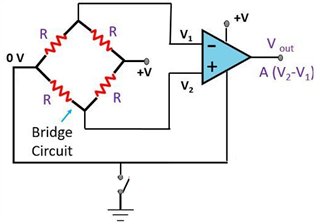Other Parts Discussed in Thread: ADS1220, INA322, INA321
Good morning team,
I have a question about powering and depowering the amplifier dynamically.
I am already using the OP2317 in a bridge measurement circuit, as a low o/s instrumentation amplifier at the output of a strain gauge.
I currently switch on and off the bias to the resistor bridge (1Hz up to 128Hz depending on customer choice of sample rate) in order to save power - it's a low power battery application.
Would I run into problems of reliability switching the power to the amplifier as well? The equipment might be running for a number of years, so this would quickly escalate to billions of power cycles over life. I note a couple of specifications in the datasheet.
1. Signals at the input must not exceed 0.3V of the power - the bridge power is also switched, but it's switched on the low side (for inexpensive low Rds_on FETs). This would mean that I would also have to low-side switch the power to the amplifier otherwise the inputs would be connected to a voltage of 3.0V (the bridge supply) and around 300µA per input would be drawn through the internal protection diodes as the bridge resistors are all 10k.
2. The typical turn on time is 100µs - there is no maximum specified but I would propose that 10ms is a pessimistic value. For this reason (and because I would wait for this period so as not to degrade accuracy by using the amplifier before it's working properly!) I would only switch on and off the amplifier for settings of 16sps (16 power cycles per second) and lower. There will also be wasted energy associated with charging and discharging of the amp's decoupling capacitors, and the input capacitance of the following ADC, however small.
It doesn't feel right, but I guess devices like the ADS1220 have an internal PGA which gets switched on and off between conversions the same number of times over life...
Is there another way to reduce the operating current, between samples, that I haven't thought of? I know it's only 20-30µA but our power consumption is critical.

thanks & regards
David




